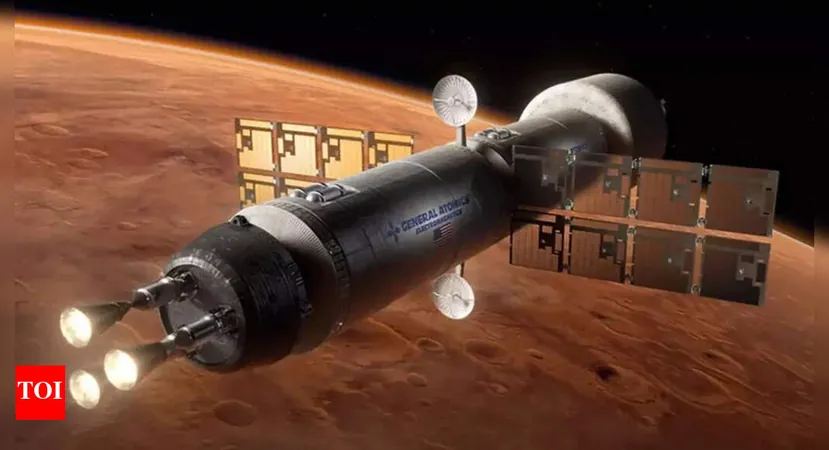
Nuclear-Powered Rockets Could Halve Mars Travel Time, Revolutionizing Space Exploration!
2025-04-05
Author: Jacques
Introduction
Pulsar Fusion, a British company at the forefront of innovative space technology, has unveiled its ambitious plan to create the Sunbird—a nuclear fusion-based rocket designed to dramatically cut travel times in space.
The Sunbird and Its Propulsion System
Utilizing a groundbreaking propulsion system known as the Dual Direct Fusion Drive (DDFD), the Sunbird could slash the time to reach Mars by 50% and get to distant Pluto in just four years! This could represent a seismic shift in our approach to interplanetary transport.
Challenges Ahead
Pulsar Fusion aims to achieve fusion in space by 2027, but the road ahead is fraught with significant engineering challenges. Richard Dinan, the CEO of Pulsar Fusion, acknowledged the complexity of creating sustainable fusion energy on Earth, stating, 'It’s very unnatural to do fusion on Earth.' In contrast, the natural environment of space presents optimal conditions for fusion to occur effectively.
Revolutionary Approach to Propulsion
The propulsion system of the Sunbird leverages helium-3 and deuterium—elements that, when fused, produce energy without the harmful by-products of traditional rocket fuels. Instead of converting energy from fusion into thrust, the DDFD produces charged particles that are immediately usable for propulsion.
Future Prospects and Applications
This revolutionary approach promises not only to make space travel more efficient but could pave the way for affordable human expeditions beyond our planet. Imagine a future where humans can embark on missions to Mars in just a few months instead of years!
Implications for Space Operations
The potential of Pulsar Fusion's technology could unlock exploration opportunities that were previously thought to be infeasible. Moreover, the Sunbird’s powerful capabilities mean that it won't be launched from Earth but will operate in space, able to capture and send other spacecraft on voyages across the solar system.
Supporting Space Transport
In addition to the extraordinary advancements in propulsion, the Sunbird could play a crucial role in supporting cargo transport satellites, enhancing the efficiency of transporting goods in space.
Conclusion
As the technology matures, the implications for colonization efforts on Mars and perhaps even beyond become tantalizingly close. While there has yet to be a successful fusion experiment conducted in space, the aspirations set forth by Pulsar Fusion could very well be within reach.
The team at Pulsar Fusion understands the critical challenges that lie ahead, but if they succeed, the Sunbird may very well mark the beginning of a new era in space exploration—one where humanity can explore the far reaches of our solar system faster, safer, and more efficiently than ever before.
Keep your eyes on the stars, as the future of space travel could change dramatically in the coming years!









 Brasil (PT)
Brasil (PT)
 Canada (EN)
Canada (EN)
 Chile (ES)
Chile (ES)
 Česko (CS)
Česko (CS)
 대한민국 (KO)
대한민국 (KO)
 España (ES)
España (ES)
 France (FR)
France (FR)
 Hong Kong (EN)
Hong Kong (EN)
 Italia (IT)
Italia (IT)
 日本 (JA)
日本 (JA)
 Magyarország (HU)
Magyarország (HU)
 Norge (NO)
Norge (NO)
 Polska (PL)
Polska (PL)
 Schweiz (DE)
Schweiz (DE)
 Singapore (EN)
Singapore (EN)
 Sverige (SV)
Sverige (SV)
 Suomi (FI)
Suomi (FI)
 Türkiye (TR)
Türkiye (TR)
 الإمارات العربية المتحدة (AR)
الإمارات العربية المتحدة (AR)